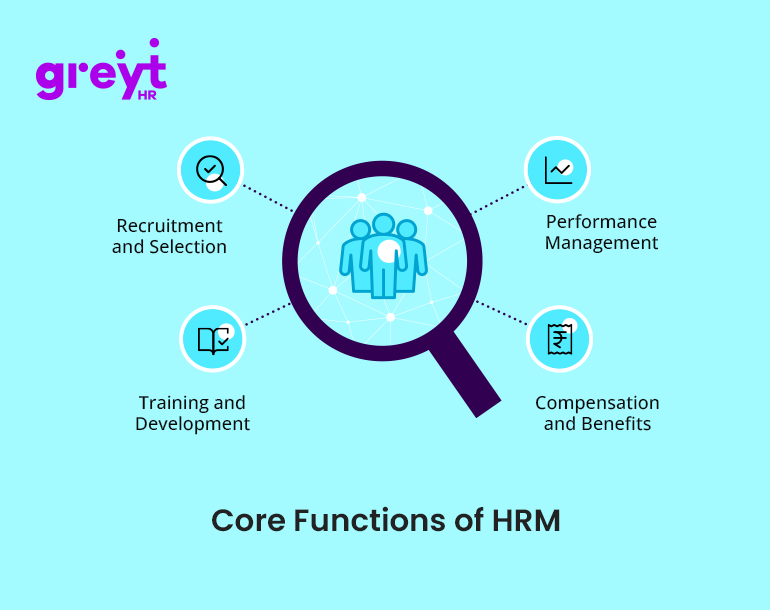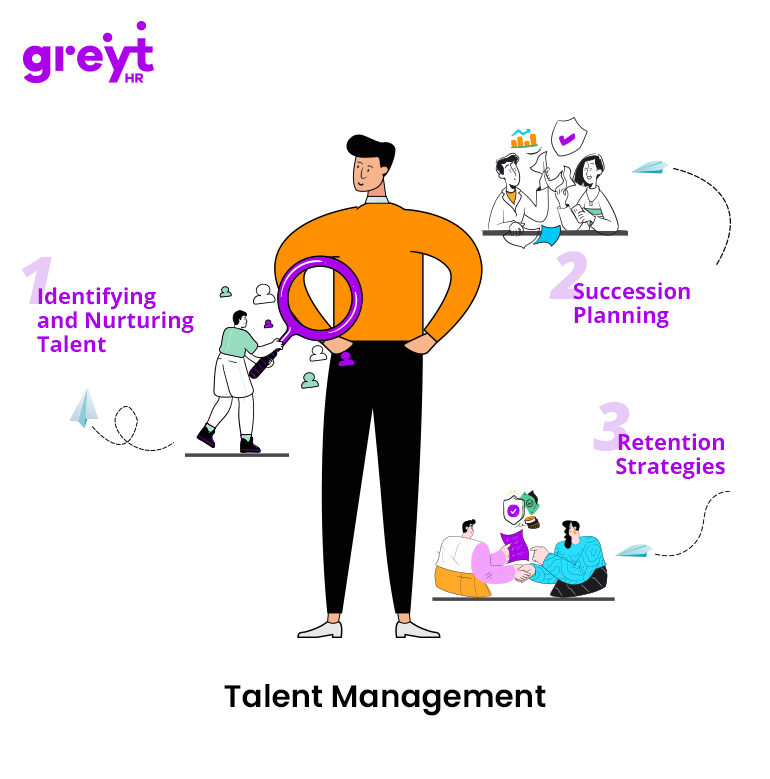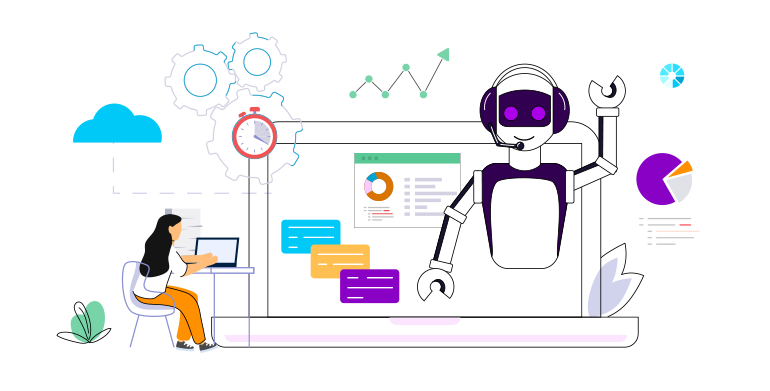Table of Contents
- 1. Importance of HRM in Modern Organizations
- 2. Core Functions of HRM
- 3. Strategic HRM
- 4. HRM in the Digital Age
- 5. Legal and Ethical Considerations in HRM
- 6. Diversity and Inclusion
- 7. Future Trends in HRM
- 8. Conclusion
- 9. FAQ
What is Human Resource Management (HRM)?
You know how every company needs to manage its employees effectively, right? That’s basically what Human Resource Management (HRM) is all about. HRM involves everything from hiring the right people and training them to managing their performance and ensuring they’re happy and motivated at work. It’s like making sure everyone is in the right job and has what they need to succeed. Understanding the basics of HRM is essential for anyone looking to navigate this effectively.
The Evolution of HRM: From Personnel Management to Strategic Partner
Originally, HR was called personnel management, and it was mostly about handling paperwork, payroll, and making sure companies followed labor laws. Over time, it started focusing more on employee satisfaction and motivation.
Nowadays, HRM has evolved into a strategic partner in businesses. It’s not just about managing tasks but also about aligning HR practices with the company’s goals. HR professionals now play a crucial role in shaping company culture, driving change, and planning for the future. They use data to make decisions and ensure the organization can meet new challenges and opportunities. This shift shows just how important people are to a company’s success.
The nature and scope of human resource management encompasses various functions that are vital for organizational success. HRM is not just about hiring and firing; it involves strategic planning, employee development, and performance management.
Importance of HRM in Modern Organizations
Have you ever thought about how crucial Human Resource Management (HRM) is in today’s organizations? It’s incredible how much HRM impacts a company’s success. HRM isn't just about hiring and firing anymore; it's about strategically managing people to drive the company forward. Let us explore why it’s so important.
Role in Organizational Success
HRM plays a central role in organizational success. Think about it: employees are the heart of any company. When they’re motivated, skilled, and aligned with the company’s goals, they can drive incredible results. HRM ensures that the right people are in the right roles. It starts with understanding the principles of HRM, which guide effective management practices.
Once the right people are on board, HRM focuses on their development. Through training and professional development programs, employees can enhance their skills and stay updated with industry trends. HRM functions and objectives are crucial in building and maintaining a thriving, productive, and resilient workforce. So next time you think about what makes a company successful, remember the vital role of HRM.
Moreover, HRM is responsible for performance management. By setting clear expectations and providing regular feedback, HRM helps employees understand their roles and how they contribute to the company’s success. Performance appraisals and constructive feedback sessions are essential in this process. They not only help in identifying areas for improvement but also recognize and reward employees' efforts, which can boost morale and motivation.
HRM as a Competitive Advantage
Now, let’s see how HRM serves as a competitive advantage. In a competitive market, having a talented and motivated workforce can set a company apart from its rivals. Effective HRM practices attract top talent. Companies known for their excellent HRM are more likely to attract high-caliber candidates. People want to work for organizations that invest in their employees’ growth and well-being.
Retention is another critical aspect. High employee turnover can be costly and disruptive. HRM strategies, such as competitive compensation, benefits packages, and a positive work environment, help retain top performers. When employees feel valued and see opportunities for growth, they are more likely to stay with the company.
HRM also contributes to a strong organizational culture. A positive, inclusive, and engaging work environment can enhance employee satisfaction and productivity. HRM initiatives, such as team-building activities, diversity and inclusion programs, and open communication channels, foster a cohesive and motivated workforce.
Furthermore, HRM helps in managing change effectively. In today’s dynamic business world, companies constantly undergo changes, whether it's adopting new technologies, entering new markets, or restructuring. HRM plays a pivotal role in facilitating these transitions smoothly. By communicating changes clearly, training employees for new roles, and addressing their concerns, HRM ensures that changes are implemented with minimal disruption and resistance.
Lastly, HRM leverages data and analytics to make informed decisions. By analyzing workforce data, HR professionals can identify trends, predict future needs, and develop strategies to address potential challenges. This proactive approach helps the organization stay ahead of the curve and maintain a competitive edge.
In summary, the importance of HRM in modern organizations cannot be overstated. From driving organizational success to providing a competitive advantage, effective HRM practices are crucial in building and maintaining a thriving, productive, and resilient workforce. So next time you think about what makes a company successful, remember the vital role of HRM.
Core Functions of HRM
Like we discussed, HRM is like the backbone of any organization, ensuring everything runs smoothly by managing its most vital asset – its people. Let's dive into the main functions of HRM and understand how they contribute to a company's growth and stability.
Recruitment and Selection
Recruitment and selection are the starting points of HRM. Finding the right talent is crucial for any organization’s success.
Strategies for Effective Recruitment
Effective recruitment strategies are essential. This involves more than just posting job ads. HR professionals use various methods such as social media, job fairs, and employee referrals to attract top talent. A strong employer brand also plays a crucial role in attracting candidates.
Selection Processes and Techniques
Once you have a pool of candidates, the selection process begins. This can include multiple stages like screening resumes, conducting interviews, and performing background checks. Techniques such as structured interviews and psychometric testing help in evaluating the candidates' skills, personality, and fit for the role.
Importance of Cultural Fit
Finding someone who fits the company culture is just as important as finding someone with the right skills. A good cultural fit ensures that the new hire will adapt well to the company’s environment and values, which boosts overall productivity and employee satisfaction.
Training and Development
Training and development are key to maintaining a skilled and motivated workforce.
Designing Training Programs
HR professionals design training programs to enhance employees' skills and knowledge. These programs can range from onboarding sessions for new hires to advanced training for seasoned employees.
Employee Development Plans
Employee development plans are personalized roadmaps for career growth. They help employees set career goals and outline the steps needed to achieve them. This not only motivates employees but also prepares them for future roles within the company.
Role of Continuous Learning
Continuous learning is essential in today’s fast-paced business world. Encouraging employees to continually upgrade their skills ensures that the organization stays competitive. HRM supports this through various learning opportunities such as workshops, seminars, and online courses.
Performance Management
Performance management is about ensuring employees perform at their best and align their goals with the company’s objectives.
Setting Performance Standards
HR professionals help set clear performance standards. These standards define what is expected from employees in their roles. Clear expectations help employees understand their responsibilities and work towards achieving them.
Performance Appraisal Methods
Regular performance appraisals are essential for evaluating employee performance. Methods like 360-degree feedback, self-assessments, and manager reviews provide comprehensive insights into an employee’s performance. These appraisals help in recognizing achievements and identifying areas for improvement.
Addressing Underperformance
Addressing underperformance is crucial. HRM provides support through performance improvement plans, coaching, and additional training. This proactive approach helps employees get back on track and meet their performance goals.
Compensation and Benefits
Compensation and benefits play a significant role in attracting and retaining top talent.
Designing Competitive Compensation Packages
Competitive compensation packages are essential for attracting and retaining the best employees. HR professionals research industry standards to ensure their company’s compensation is competitive. This includes not only salaries but also bonuses and incentives.
Types of Employee Benefits
Employee benefits are a critical component of compensation packages. These can include health insurance, retirement plans, paid time off, and wellness programs. A comprehensive benefits package shows employees that the company cares about their well-being.
Aligning Compensation with Organizational Goals
Aligning compensation with organizational goals ensures that employees are rewarded for their contributions to the company’s success. Performance-based incentives and bonuses motivate employees to achieve their targets and drive the company forward.
In summary, the core functions of Human Resource Management – recruitment and selection, training and development, performance management, and compensation and benefits – are vital for the success of any organization. By effectively managing these areas, HRM ensures that the company has a talented, motivated, and productive workforce ready to meet its goals and challenges.

Strategic HRM
Did you know that companies with strong HRM practices are 2.5 times more likely to be high performers? That’s because strategic HRM aligns the workforce with the company’s goals, driving success in a competitive market. Let's see what makes strategic HRM so essential.
Strategic Planning in HRM
Aligning HR Strategies with Business Goals
Strategic planning in HRM starts with aligning HR strategies with business goals. This means HR professionals need to understand the company's vision and objectives and ensure that HR activities support these aims. For example, if a company wants to expand globally, HR needs to develop a strategy for recruiting and training employees with the necessary skills and cultural competencies.
Role of HR in Strategic Planning
HR plays a crucial role in strategic planning. They are not just involved in hiring and firing but are also key players in shaping the company's direction. HR professionals bring insights into workforce trends, skill gaps, and employee needs, which are vital for making informed strategic decisions. They work closely with other departments to ensure that HR strategies align with overall business plans.
Examples of Strategic HR Initiatives
Strategic HR initiatives can include talent acquisition programs aimed at attracting top talent from diverse backgrounds, leadership development programs to prepare future leaders, and employee engagement initiatives to boost morale and productivity. These initiatives are designed to support long-term business goals and create a strong, adaptable workforce.
Talent Management
Identifying and Nurturing Talent
Talent management is a core component of strategic HRM. Identifying high-potential employees early on and nurturing their growth is essential. This can involve creating personalized development plans, offering mentoring opportunities, and providing continuous learning options. By investing in their talent, companies can build a pipeline of skilled employees ready to take on critical roles.
Succession Planning
Succession planning ensures that there are qualified individuals ready to step into key positions when needed. This process involves identifying potential leaders within the organization and preparing them for future roles through targeted development programs. Succession planning helps maintain business continuity and reduces the risks associated with sudden leadership changes.
Retention Strategies
Retaining top talent is crucial for maintaining a competitive edge. Effective retention strategies include offering competitive compensation packages, creating a positive work environment, and providing opportunities for career advancement. HR professionals also focus on understanding employee needs and addressing them proactively to reduce turnover rates.

Employee Relations and Engagement
Building Positive Employee Relations
Building positive employee relations is vital for a healthy work environment. This involves fostering open communication, resolving conflicts fairly, and ensuring that employees feel valued and respected. Positive employee relations lead to higher job satisfaction, lower turnover, and better overall performance.
Techniques for Increasing Employee Engagement
Engaged employees are more productive and committed to their work. Techniques for increasing engagement include regular feedback sessions, recognition programs, and creating opportunities for employees to contribute to decision-making processes. Providing a supportive and inclusive workplace where employees feel their contributions matter is key to boosting engagement.
Measuring Employee Satisfaction
Measuring employee satisfaction helps HR professionals understand the effectiveness of their strategies and identify areas for improvement. Surveys, focus groups, and one-on-one interviews are common methods for gauging employee satisfaction. By regularly collecting and analyzing this data, HR can make informed decisions to enhance the work environment and address any issues that may arise.
In summary, strategic HRM is about aligning HR activities with business goals to drive success. From strategic planning and talent management to employee relations and engagement, HR professionals play a crucial role in shaping a company's future. By focusing on these areas, HRM not only supports the company's immediate needs but also ensures long-term growth and sustainability. Strategic HRM transforms HR from a support function into a vital strategic partner, essential for navigating today’s dynamic business landscape.
HRM in the Digital Age
Studies show that over 70% of companies use HRMS to streamline their processes, and around 50% are now incorporating AI and machine learning into their HR practices. In today’s digital age, leveraging technology is not just an option but a necessity for effective Human Resource Management (HRM). Let's know how technology is transforming HRM and how it's adapting to the rise of remote work.
Technology in HRM
HR Software and Tools
The digital age has introduced a plethora of HR software and tools designed to make HR processes more efficient and effective. Tools like Applicant Tracking Systems (ATS) simplify the recruitment process by automating resume screening and interview scheduling. Performance management software helps in setting goals, tracking progress, and conducting appraisals. Learning Management Systems (LMS) facilitate employee training and development, providing a platform for online courses and resources. These tools not only save time but also ensure accuracy and consistency in HR practices. Additionally, it’s important to note that HRIS, HCM, and HRMS are totally different from one another.
Role of AI and Machine Learning in HRM
AI and machine learning are revolutionizing HRM. AI-powered chatbots can handle routine inquiries, freeing up HR professionals to focus on more strategic tasks. Machine learning algorithms analyze employee data to predict trends such as turnover rates, helping HR develop proactive retention strategies. For instance, AI can identify patterns in employee performance and engagement, allowing for more personalized and effective interventions. These technologies enhance decision-making and provide deeper insights into workforce dynamics.
Data-Driven HR Practices
Data-driven HR practices are becoming the norm. By collecting and analyzing data, HR professionals can make more informed decisions. For example, data analytics can reveal which recruitment sources yield the best candidates, enabling HR to optimize their hiring strategies. Performance metrics help identify high-performing employees and areas that need improvement. Employee surveys and feedback tools gather insights into employee satisfaction and engagement, guiding HR in implementing effective programs and policies. This data-centric approach ensures that HR strategies are aligned with organizational goals and employee needs.
Remote Work and HRM
Managing Remote Teams
The shift to remote work has posed new challenges for HRM. Managing remote teams requires different strategies compared to traditional office settings. Clear communication is crucial, so HR must ensure that remote employees have access to effective communication tools. Regular virtual meetings, clear guidelines, and maintaining an open line of communication help in managing remote teams effectively. HR also needs to foster a sense of community and belonging among remote workers to keep them engaged and motivated.
Tools and Best Practices for Remote HRM
Several tools have become essential for managing remote HRM. Project management software like Asana or Trello helps in tracking tasks and deadlines. Communication platforms such as Slack and Microsoft Teams facilitate instant messaging and collaboration. Video conferencing tools like Zoom and Google Meet are vital for virtual meetings and maintaining face-to-face interaction. Best practices for remote HRM include setting clear expectations, providing regular feedback, and encouraging work-life balance to prevent burnout.
Addressing Challenges of Remote Work
Remote work comes with its own set of challenges. One major issue is maintaining productivity and accountability. HR can address this by setting clear performance metrics and regularly checking in with employees. Another challenge is the potential for employee isolation and disengagement. HR can combat this by organizing virtual team-building activities and fostering an inclusive company culture. Additionally, HR must ensure that remote employees have access to the necessary resources and support to perform their jobs effectively.
In conclusion, HRM in the digital age is heavily influenced by technology and the rise of remote work. The use of HRMS, AI, and data-driven practices is transforming how HR operates, making it more efficient and effective. Managing remote teams requires a strategic approach, leveraging the right tools and best practices to maintain productivity and engagement. By embracing these technological advancements and adapting to new work environments, HRM can continue to drive organizational success in the digital age.

Legal and Ethical Considerations in HRM
In India, HR professionals navigate a complex legal landscape while ensuring ethical practices to foster a fair and inclusive workplace. Here’s what you need to know:
Employment Law and Compliance
Key Employment Laws to Know
In India, several key employment laws govern various aspects of HRM. These include the Factories Act, 1948, which regulates working conditions in factories, ensuring safety and health standards. The Employees' Provident Funds and Miscellaneous Provisions Act, 1952 mandates provident fund contributions for employees. The Payment of Gratuity Act, 1972 ensures payment of gratuity to employees after completing a minimum tenure of service. Understanding and adhering to these laws is essential to avoid legal liabilities and penalties.
Ensuring Compliance in HR Practices
HR departments must ensure strict compliance with these laws in their recruitment, compensation, and benefits practices. This includes proper documentation, adherence to statutory requirements, and timely filings. Regular audits and reviews help ensure that HR practices are in line with legal standards and organizational policies.
Handling Legal Issues in HR
Despite best efforts, legal issues may arise. HR professionals play a crucial role in resolving disputes, such as employee grievances, discrimination claims, or wrongful termination cases. Proper documentation and adherence to due process are critical in defending the organization’s actions in legal proceedings. Seeking legal counsel when needed ensures that HR decisions are legally sound and protect the rights of both employees and the organization.
Ethical Issues in HRM
Common Ethical Dilemmas in HR
Ethical considerations in HRM include issues like fairness in hiring and promotions, maintaining confidentiality, and handling conflicts of interest. For example, ensuring equal opportunities for all candidates regardless of background or personal connections is crucial to upholding ethical standards. Transparency in decision-making processes and maintaining confidentiality in employee information are also ethical imperatives.
Promoting an Ethical Workplace
Promoting an ethical workplace culture starts with leadership setting a clear example. HR plays a pivotal role in fostering ethical behavior through policies that emphasize integrity, respect, and fairness. Training programs and workshops on ethical conduct help employees understand their responsibilities and uphold ethical standards in their daily interactions.
Implementing Ethical HR Policies
Implementing ethical HR policies involves developing a code of conduct that outlines expected behaviors and consequences for violations. Policies should cover areas such as anti-discrimination, sexual harassment prevention, and conflict resolution. Regular training sessions and communication channels for reporting unethical behavior create a culture where ethical conduct is valued and upheld.

Diversity and Inclusion
In India, promoting diversity and fostering inclusion in the workplace is not just about compliance; it's about leveraging the strengths of a diverse workforce to drive innovation and success. Let’s explore how diversity and inclusion (D&I) contribute to organizational excellence:
Importance of Diversity in the Workplace
Benefits of a Diverse Workforce
A diverse workforce brings together people from different backgrounds, experiences, and perspectives. This diversity fosters creativity, problem-solving, and innovation. Studies show that diverse teams outperform homogeneous teams in terms of productivity and decision-making. Embracing diversity also enhances employee morale and engagement, leading to a more vibrant and dynamic workplace culture.
Strategies for Promoting Diversity
HRM strategies for promoting diversity include implementing inclusive hiring practices, such as reaching out to diverse talent pools, removing biases from recruitment processes, and ensuring equal opportunities for all applicants. Creating a welcoming environment where diversity is celebrated encourages employees to bring their whole selves to work and contributes to a positive employer brand.
Overcoming Challenges in Diversity Initiatives
While promoting diversity is beneficial, it comes with challenges such as unconscious bias, resistance to change, and lack of awareness. HRM addresses these challenges through training programs that raise awareness about unconscious bias and promote inclusive behaviors. Implementing diversity metrics and regularly evaluating D&I initiatives helps track progress and identify areas for improvement.
Inclusion and Belonging
Creating an Inclusive Workplace Culture
Inclusion goes beyond diversity; it’s about creating a sense of belonging for every employee. HRM fosters inclusion by promoting respect, fairness, and equal opportunities for career growth. This includes developing inclusive policies and practices that accommodate diverse needs and perspectives.
Policies to Support Inclusion
Inclusive policies may include flexible work arrangements, accessible facilities for employees with disabilities, and cultural sensitivity training. HRM ensures that these policies are communicated effectively and implemented consistently across the organization.
Measuring Success in Inclusion Efforts
Measuring the success of inclusion efforts involves tracking metrics such as employee satisfaction, retention rates among diverse groups, and participation in D&I programs. Conducting regular surveys and focus groups to gather feedback from employees helps HRM gauge the effectiveness of inclusion initiatives and make data-driven improvements.

HRM Metrics and Analytics
With advancements in technology, HR professionals are leveraging metrics and analytics to enhance organizational performance and employee satisfaction. Here’s what you need to know:
HR Metrics and KPIs
Key HR Metrics to Track
In India, HR departments track various metrics to assess their effectiveness and impact. These include Employee Turnover Rate, which measures the percentage of employees leaving the company within a specific period. Retention Rate indicates the percentage of employees retained over time, reflecting the organization’s ability to retain talent. Employee Engagement Score measures the level of employee commitment and motivation. Cost per Hire calculates the total expenses incurred in hiring new employees, including recruitment costs.
Using Data to Drive HR Decisions
HRM is moving away from gut feeling to data-driven decisions. By analyzing HR metrics, such as performance data, absenteeism rates, and training effectiveness, HR professionals gain insights into workforce trends and challenges. For example, data might reveal a high turnover rate in a particular department, prompting HR to investigate and implement retention strategies. Data-driven decisions improve efficiency and effectiveness in HR practices.
Reporting and Analyzing HR Data
Reporting and analyzing HR data involves compiling insights into meaningful reports for stakeholders. Visualization tools like dashboards and graphs simplify complex data, making it easier to understand trends and patterns. Regular analysis helps HR anticipate future needs, identify areas for improvement, and measure the impact of HR initiatives on business outcomes.
Workforce Analytics
Predictive Analytics in HR
Predictive analytics uses historical data to forecast future trends and behaviors. In HRM, predictive analytics can predict employee turnover, identify high-potential candidates, and forecast staffing needs based on business growth projections. By anticipating challenges and opportunities, HR can proactively develop strategies to mitigate risks and capitalize on opportunities.
Leveraging Analytics for Workforce Planning
Workforce planning involves aligning HR strategies with business goals. Analytics helps HR forecast workforce requirements, assess skill gaps, and optimize workforce allocation. For example, analytics might reveal a shortage of skills in emerging technologies, prompting HR to prioritize training and recruitment in those areas. Strategic workforce planning ensures that the organization has the right talent at the right time to achieve its objectives.
Case Studies of Successful HR Analytics
Several Indian companies have successfully leveraged HR analytics to drive business outcomes. For instance, a leading IT firm used predictive analytics to identify factors contributing to employee attrition and implemented targeted retention strategies, resulting in a significant reduction in turnover rates. Another case involved a retail giant using workforce analytics to optimize staffing levels during peak seasons, improving customer service and operational efficiency.
Future Trends in HRM
Let’s explore the exciting future trends shaping the landscape of Human Resource Management (HRM) in India. As organizations adapt to technological advancements and changing workforce dynamics, HRM is evolving to meet new challenges and opportunities.
Approaches to human resource management have evolved, and organizations must adapt to these changes to remain competitive.
Emerging Trends in HRM
Future of Work
The future of work is undergoing rapid transformation with trends like remote work, gig economy, and flexible work arrangements gaining prominence. HRM must adapt by redefining workplace policies, enhancing virtual collaboration tools, and fostering a culture of trust and accountability among remote teams.
Impact of Automation and AI on HRM
Automation and AI are revolutionizing HRM practices, from recruitment automation and chatbot-driven employee support to AI-powered performance analytics. HR professionals need to embrace these technologies to streamline processes, improve decision-making, and enhance employee experiences.
Preparing for the Future of HR
As HRM evolves, professionals must develop skills in data analytics, digital HR technologies, and change management. Continuous learning and upskilling will be critical to staying relevant in a digitally-driven workplace.
Sustainability and HRM
Green HRM Practices
Green HRM focuses on integrating environmental sustainability into HR practices. This includes promoting eco-friendly initiatives such as reducing carbon footprint, implementing waste management programs, and encouraging sustainable commuting options among employees.
Role of HR in Promoting Sustainability
HR plays a pivotal role in driving sustainability initiatives across the organization. This involves developing green policies, conducting awareness programs on environmental conservation, and integrating sustainability goals into employee performance metrics.
Implementing Sustainable HR Practices
Implementing sustainable HR practices requires collaboration across departments and stakeholders. HR can lead by example through sustainable procurement practices, promoting energy-efficient workplace solutions, and partnering with eco-friendly vendors and suppliers.

Conclusion
In India, HRM (Human Resource Management) is evolving with the adoption of metrics, analytics, and future-focused trends. Stay informed about HRM metrics, analytics, and trends to optimize workforce management and organizational success. Understanding the importance of HR management is crucial for organizations aiming to thrive in a competitive landscape.
In the rapidly evolving landscape of Human Resource Management (HRM) in India, statistics and numbers underscore the transformative impact of strategic HR practices. As per culturemonkey 2024 report, over 75% of Indian companies are leveraging HR metrics and analytics to drive decision-making and enhance operational efficiency. This shift towards data-driven HRM not only improves employee engagement and retention but also boosts overall organizational performance.
Key HR metrics such as employee turnover rates, retention rates, and cost per hire are critical indicators monitored by HR professionals to assess workforce dynamics and optimize strategies. These metrics empower organizations to anticipate challenges, identify trends, and proactively implement solutions that align with business objectives.
Looking forward, 2024 and beyond, the future of HRM in India is shaped by emerging trends like automation, AI integration, and sustainability initiatives. These trends necessitate a proactive approach from HR departments to embrace technological advancements and foster a culture of innovation and sustainability within their organizations.
Amidst these advancements, greytHR stands out as a leading provider of HR and payroll software solutions in India. With over 25 years of industry experience, greytHR offers comprehensive tools for managing HR functions, from payroll processing and attendance tracking to compliance management and employee self-service portals. Their user-friendly interface and customizable features cater to the diverse needs of businesses across various sectors, ensuring seamless HR operations and regulatory compliance.
As organizations navigate the complexities of modern HRM, greytHR remains committed to empowering businesses with robust, scalable HR solutions that drive efficiency, compliance, and employee satisfaction. Whether you're a startup scaling operations or an established enterprise seeking to streamline HR processes, greytHR stands ready to support your journey towards organizational excellence in the dynamic Indian market.
In conclusion, as HRM continues to evolve with technological advancements and strategic insights, greytHR stands at the forefront, empowering Indian businesses to thrive in a competitive landscape through innovative HR solutions tailored to meet the demands of the future.
FAQ
What are the key responsibilities of an HR manager?
As an HR manager, you're basically the backbone of our organization's people operations. Your main gig involves everything from finding and hiring the best talent to making sure everyone's happy and thriving at work. Plus, you handle all the nitty-gritty details like salaries, benefits, and training programs. It's a big role, but it's all about making sure our team and company are set up for success.
How can HRM contribute to employee retention?
HRM is like our secret sauce for keeping the team happy and sticking around. By offering killer perks, opportunities to grow, and creating a workplace that's inclusive and supportive, HRM helps us hold on to our top talent. They're all about making sure everyone feels valued and has room to shine. It's how we keep our awesome team together and motivated.
What are the latest trends in HRM technology?
You won't believe how tech is shaking up HR! From AI sorting through resumes to cool apps that let you clock in from anywhere, HR tech is all about making our lives easier and more efficient. We're talking about smart systems that track everything from employee performance to payroll, all in the cloud. It's not just cutting-edge; it's essential for keeping up with how work is changing today.
How does HRM impact organizational culture?
HRM is like our culture architect. It sets the tone for how we work together, ensuring fairness, diversity, and respect are baked into everything we do. By promoting a positive vibe and supporting our growth and well-being, HRM builds a workplace where everyone feels heard, valued, and ready to give their best. It's why our team spirit is so strong.
What is the difference between HRM and personnel management?
Think of HRM as the evolved form of personnel management. While personnel management focuses on tasks like hiring and paperwork, HRM takes it up a notch. It's about strategic planning, employee development, and aligning our team's goals with the company's vision. HRM's all about making sure our people are not just here, but thriving.
How can small businesses effectively manage HR?
For small business, HR's about wearing many hats. It's about keeping things legal, handling payrolls, and making sure our team feels supported. Leveraging smart tools and sometimes bringing in outside help can make it easier. It's all about setting up processes that fit our size and help us grow without the HR headaches.
What are the best practices for handling employee grievances?
When stuff comes up, HR's there to listen, investigate, and resolve issues fairly and confidentially. It's about having clear policies, open communication, and a supportive environment. By addressing concerns promptly and learning from feedback, HR keeps our team happy and focused on what matters most ‒ our work.
How do you measure the success of HRM initiatives?
Success for HRM's all about the numbers that matter ‒ like how happy our team is, how long they stick around, and how productive we are. We use surveys, performance metrics, and turnover rates to see what's working and where we can improve. It's about making sure our HR efforts pay off in a big way.

